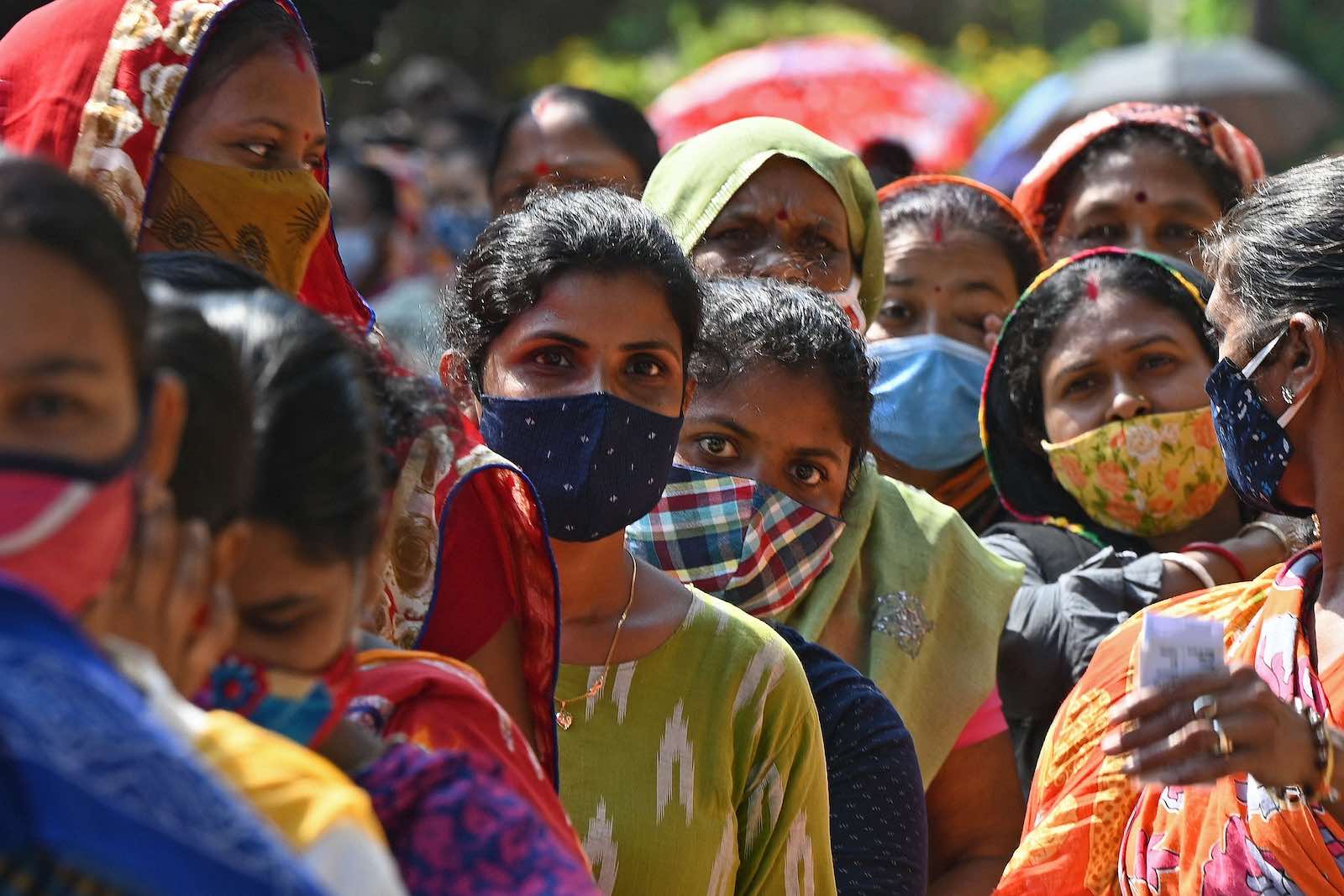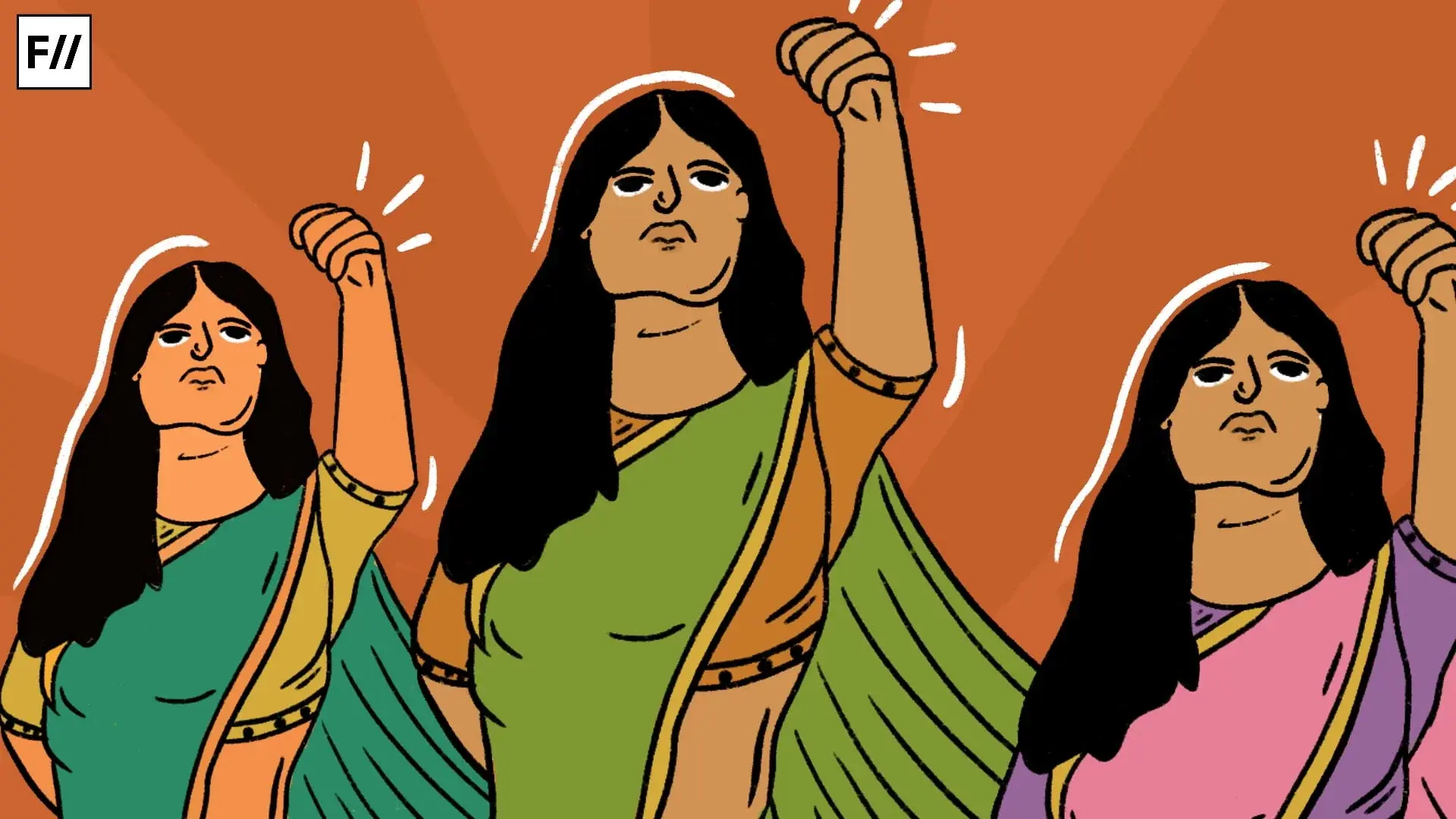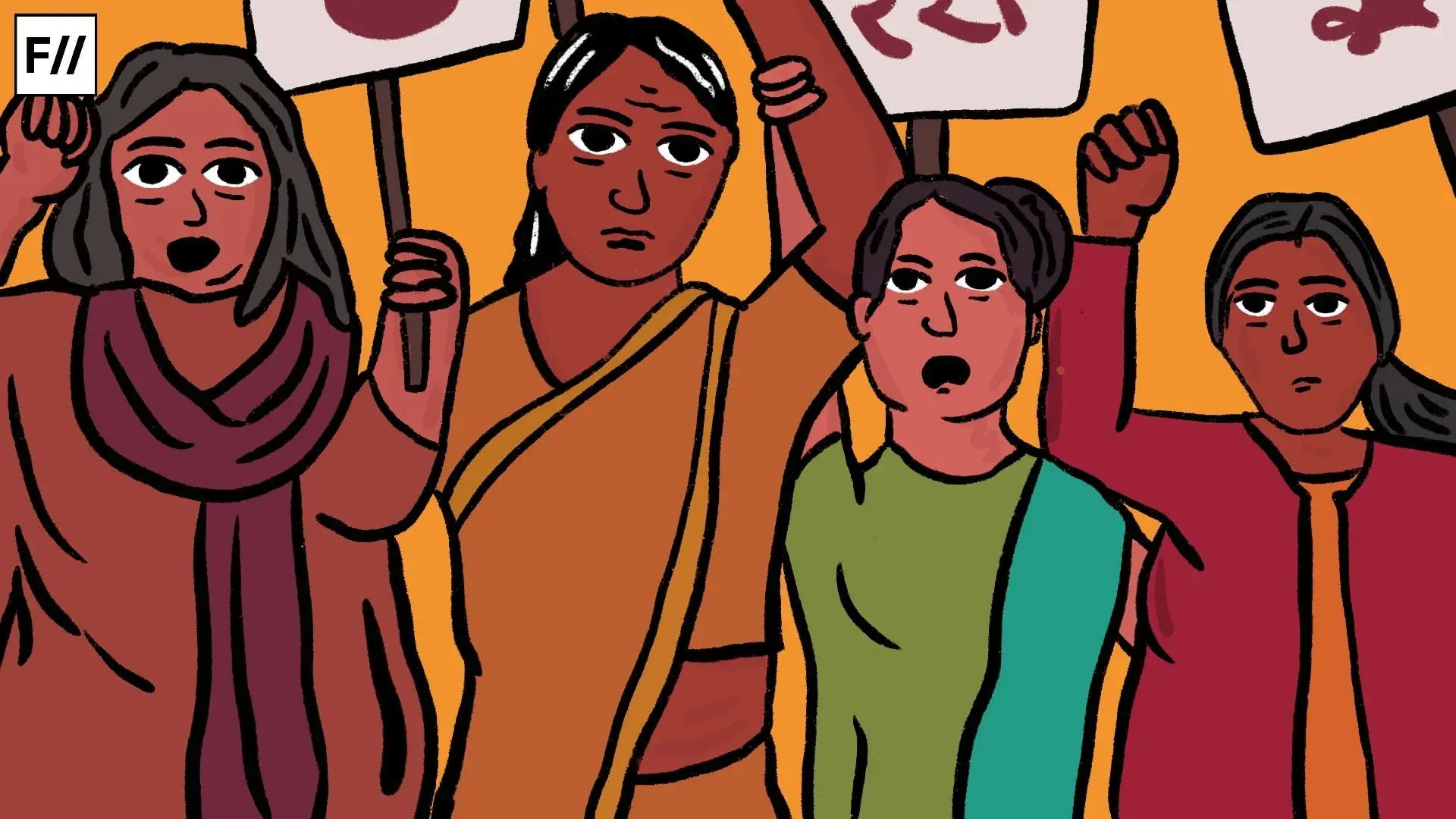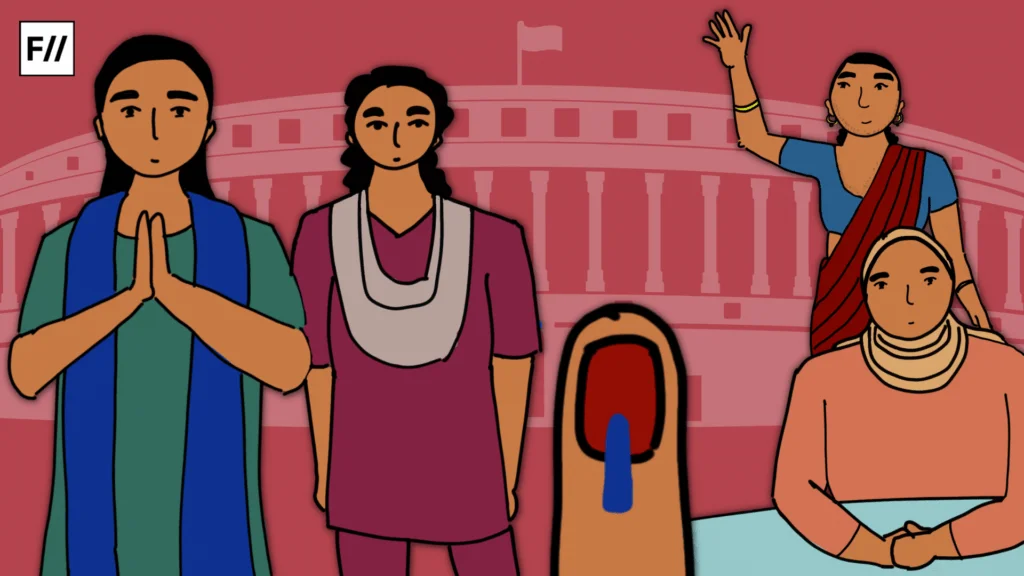The 2024 Lok Sabha elections, held after the passage of the historic Women’s Reservation Bill were expected to mark a significant milestone in women’s political representation in India, have instead revealed a decline in the overall number of women elected, particularly from marginalised communities such as Dalit, Tribal, and Muslim sections. Despite the high hopes, only 74 women were elected to the 18th Lok Sabha, accounting for 13.6% of the total seats. This figure falls short of the 14.4% representation in the 17th Lok Sabha and is well below the 33% quota that will be designated for women after the next delimitation exercise.
Despite the high hopes, only 74 women were elected to the 18th Lok Sabha, accounting for 13.6% of the total seats
In the 18th Lok Sabha, women MPs were elected from 14 different parties. The Bharatiya Janata Party (BJP) had the highest number of women MPs, with 31, followed by the Congress with 13, the Trinamool Congress (TMC) with 11, the Samajwadi Party (SP) with 5, the Dravida Munnetra Kazhagam (DMK) with 3, and the Lok Janshakti Party (Ram Vilas) and the Janata Dal (United) (JD(U)) each with 2. Seven other parties had one woman MP each. The TMC had the highest proportion of women MPs among the parties with double-digit representation with 37.93%, followed by the Congress with 13.13%, and the BJP with 12.92%.
Intersectionality: gender, caste, and religion
In the 17th Lok Sabha proceedings, two Members of Parliament (Asaduddin Owaisi and Imtiaz Jaleel from AIMIM) voted against the Women’s Reservation Bill, citing the need for OBC sub-categorisation within the bill as their primary concern. Owaisi opposed the bill quoting that the bill would provide reservation only to “savarna women”, and questioned why OBC and Muslim women who have the least representation in the parliament are not being benefited under any quota.

This demand highlights the ongoing debate surrounding the inclusion of sub-categories to ensure fair representation among marginalised sections. While the sub-categorisation issue remains unresolved and debatable, what is evidently clear is the intersectional nature of the oppression faced by women from marginalised castes and minority communities. The women experience compounded discrimination on account of their gender, caste or minority religion.
The intersectionality of gender, caste, and religion profoundly impacts women’s political participation in India. Women from oppressed castes and religious minorities face multiple forms of oppression limiting their access to education, employment, and other resources. This intersectionality creates an oppressive junction of discrimination and marginalisation that prohibits their ability to participate in politics effectively.
The very act of a Tribal, Dalit, or Minority woman entering politics and being elected as a parliamentarian is itself an act of resistance.
The very act of a Tribal, Dalit, or Minority woman entering politics and being elected as a parliamentarian is itself an act of resistance. This resistance challenges the intersectionality of patriarchy, casteism, and religious discrimination, where a woman is often the last in the queue of beneficiaries. The “lived experiences” of marginalised women can only be authentically spoken by them, underscoring their need and right to be represented in the house of the people. However, the grip of patriarchy in politics is evident in the startling reality of the 18th Lok Sabha;
Muslim women in the 18th LS
Out of the 24 Muslim elected MPs, only two are women: Iqra Choudhary from the Samajwadi Party and Sajda Ahmed from the All India Trinamool Congress. This translates to a mere 0.36% representation. It is also important to note that the ruling party did not nominate even a single Muslim woman in any of the 543 constituencies, and the newly formed cabinet consists not even a single Muslim representation for the first time in the history of independent India.

The delimitation commission in 2008 led to the reservation of 84 seats for Scheduled Castes (SCs) and 47 seats for Scheduled Tribes (STs) in the Lower House. However, the representation of women on these reserved seats is woefully inadequate.
Dalit women in the 18th LS
The representation of women on reserved seats for Scheduled Castes (SCs) is equally concerning. Of the 84 reserved seats for SCs, only 11 were won by women, with 4 from the Indian National Congress (INC), 2 each from the Bharatiya Janata Party (BJP) and All India Trinamool Congress (AITC), and 1 each from the Lok Janshakti Party (LJPRV), Samajwadi Party (SP), and Dravida Munnetra Kazhagam (DMK). This translates to a mere 13.09% representation of women on the reserved SC seats.
Tribal women in the 18th LS
Similarly, of the 47 reserved seats for STs, only 6 were won by women, with 4 from the BJP, 1 each from the YSR Congress Party (YSRCP) and Jharkhand Mukti Morcha (JMM). This represents a mere 12.76% representation of women on the reserved ST seats.
The empirical data underscores the concerning reality of the underrepresentation of Dalit and minority women in the 18th Lok Sabha. This data highlights systemic barriers that persist despite the legislative advancements made.*

The stark reality of the 18th Lok Sabha reveals that despite the number of women voters increasing every election, the voices of women, specifically the ones from marginalised sections, are destined to be muted in the halls of parliament. This underrepresentation not only undermines the principles of democracy but also perpetuates systemic inequalities. Affirmative Action policies concerning “gender and caste” as the cause of marginality are required to dismantle these barriers. The time for change is now, lest we continue to witness the silent exclusion of marginalised communities from the heart of our democracy.
Alongsides the challenges, a few first-time elected young dalit women are;
- Shambhavi Choudhary (25) from the Lok Janshakti Party (LJPRV) elected from Samastipur constituency in Bihar,
- Sanjana Jatav (26) from the Indian National Congress (INC) elected from Bharatpur constituency in Rajasthan, and
- Priya Saroj (25) from the Samajwadi Party (SP) elected from Machhlishahr constituency in Uttar Pradesh will enter the parliament.
The influx of new and relatively younger faces in the Lok Sabha holds promise for the future of women’s political participation in India. These women MPs are younger than the overall House average of 54 years. As they navigate the complex world of Indian politics, their voices will undoubtedly be loud enough to bring about change, as they work to create a more inclusive and equitable society.

*The provided data is an analysis of Dalit and Tribal Women participation on the SC and ST reserved seats in the parliament. The possibility of a woman, belonging to either SC or ST community, contesting and winning on a non-reserved seat is a rare sight. For instance; Varsha Gaikwad (INC) from Mumbai North Central Constituency. It must also not be ignored that she has been winning the Dharavi constituency in Maharashtra State election since 2004.
The mal(e)icious politics
It is evident that the male-dominated political order has led to conflict and dysfunctioning of the world order around the globe. The two devastating wars in contemporary times highlight the need for a shift towards more inclusive and compassionate politics. More women in politics around the globe will majorly rectify the world order and bring empathy and compassion back into politics. The “MALEfication” of politics has proven detrimental, and the inclusion of more women could pave the way for a more just and equitable world.
While India struggles with women’s political representation, a few of India’s peer countries have made significant strides; South Africa boasts 46% women MPs, the United Kingdom 35%, and the United States 28%. Two days prior to the Indian election results, Mexico celebrated a historic achievement with the election of its first-ever female president, Claudia Sheinbaum Pardo. The candidacy of two women as the main contenders for the presidency marked a significant milestone in Mexican politics.

This progress follows electoral reforms implemented nearly a decade ago, which mandated gender parity in nominations to Mexico’s legislatures, resulting in women now representing half of Congress. This landmark highlights the possibility of progress through legislative reforms and affirmative actions towards inclusive governance.
While there have been notable efforts to enhance gender equality in politics, including reservation of seats for women in local bodies, similar reforms at the national level are crucial.
In India, female representation at the national level remains inadequate specifically from the marginalised section. While there have been notable efforts to enhance gender equality in politics, including reservation of seats for women in local bodies, similar reforms at the national level are crucial.
About the author(s)
Harsh Bodwal teaches Social Science and English at a CBSE-affiliated school and holds an MA degree in Political Science from Jawaharlal Nehru University. His research explores how caste, patriarchy, and capital intersect with the various institutions to shape and often constrain democratic processes.





